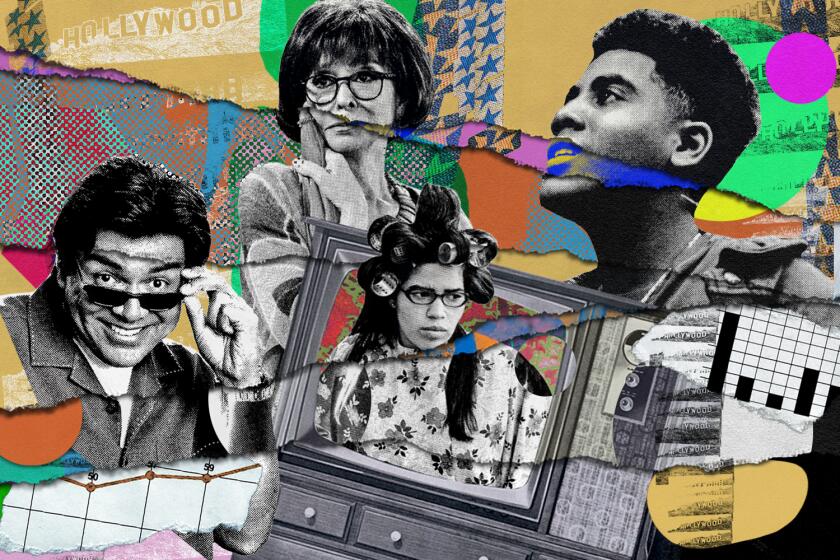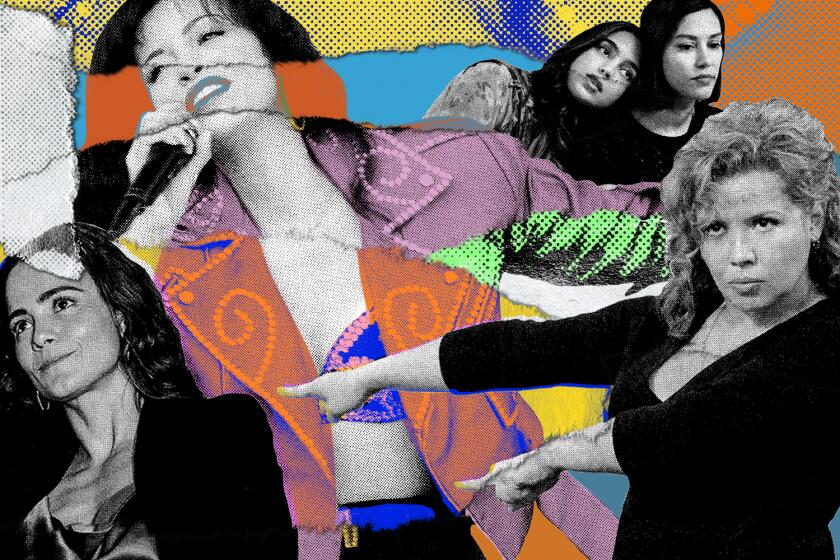TV is failing Latinos. The latest study of Hollywood diversity shows how badly

UCLA’s latest Hollywood Diversity Report confirms that Latino representation in Hollywood remains abysmal in the television industry.
Released Tuesday, among the key findings of the TV-focused portion of the annual study is that Latino representation in key TV jobs remained stagnant since last year’s report, despite gains made by people of color overall in most of the employment categories tracked by researchers.
According to the study, Latino actors accounted for only 7.1% of lead roles, and 6.3% of all roles, on broadcast scripted shows during the 2019-2020 season. Latino actors fared no better in scripted cable and digital TV, where they played 5.7% and 5.5% of all roles, respectively, and fewer than 5% of leads. These numbers fall far short of reflecting the U.S. population, 18.5% of which identifies as Hispanic or Latino.
A Times analysis has found that Latino representation in film and TV has stagnated for a decade-plus, even as Latinos’ share of the population has grown.
The data about those behind the camera is even more damning. The study estimates that Latino directors helmed just 5.4% of episodes on broadcast TV, 3.5% of those on cable and 3% of digital TV episodes. And, given that TV is considered a writer’s medium, the lack of Latino representation among credited writers is particularly glaring: Latino writers accounted for just 4.8% of those credited in broadcast, 4.7% in cable and 4.3% in digital TV shows.
Authored by UCLA professor and dean of social sciences Darnell Hunt and Ana-Christina Ramón, director of research and civic engagement for social sciences at UCLA, the television-focused Part 2 of “Hollywood Diversity Report 2021: Pandemic in Progress” examines 461 scripted series from the 2019-2020 season across broadcast, cable and digital platforms (Part 1, which focused on 2020 films, was published in April). Researchers look at both on-screen and behind-the-camera roles — including the lead actors, creators, directors and credited writers of scripted broadcast, cable and digital shows — to document how women and people of color are represented in the industry.
The study found that overall, people of color have made gains in nine of the 12 job categories examined since last year’s study, including among leads on digital scripted shows; creators on cable and digital shows; directors on broadcast, cable and digital shows; and as credited writers on broadcast, cable and digital shows. While overall representation remained unchanged for people of color compared with their white counterparts among broadcast scripted leads, fewer people of color accounted for leads of cable scripted shows and creators of broadcast shows compared with last year’s study.
Part of a growing cadre of Latino writers speaking out, staffers say the project came with a low budget, poor pay and a brutal schedule.
The biggest gains for representation have been on screen, with people of color accounting for 33.6% of cable and 31% of digital leads during the time period examined.
Overall, people of color accounted for 43.4% of all roles on scripted broadcast shows; cable and digital series were close behind with actors of color accounting for 40.5% and 38.4% of all roles, respectively. (42.7% of the U.S. population identify as people of color.) Despite positive trends for on-screen representation, specific racial and ethnic groups, including Latino, Asian and Indigenous people, continue to be severely underrepresented on TV.
The Hollywood Diversity Report also tracks the representation of women in the same key TV jobs. For the 2019-2020 season, the study found that women made gains in six of 12 job categories, including among leads on scripted digital shows; creators of cable shows; directors of broadcast, cable and digital episodes; and credited writers on cable shows. Despite these gains, women remained underrepresented in nearly all categories during the time period examined.
Read the full report here.
More to Read
The complete guide to home viewing
Get Screen Gab for everything about the TV shows and streaming movies everyone’s talking about.
You may occasionally receive promotional content from the Los Angeles Times.









